
Of all the China Marine publications of the period, the 4th Marine Regiment’s “Walla Walla” is probably the most recognized and enduring. The idea for a regular newsletter documenting daily regimental activities came from a Navy Chaplin who accompanied the 4th to China: W.R. Hall. The first edition, a four page broadsheet style paper was published on Friday 8 June 1928 and continued to be published on a weekly basis thereafter. The inaugural edition was published without a title, calling for the Marines to submit a name for the new newsletter. A contest was held with a $5.00 prize offered to the winner whose title was chosen by a committee. By the end of the week, the selection committee had over fifty suggested titles. The winning title “The Walla Walla” was submitted by Captain Lemuel Shepherd who claimed according to a translation of the time, meant “much talk” in Chinese. Prior to the arrival the US military community in China was served by a slick publication called “The Orient”. This beautiful large format magazine provided news for all branches serving throughout Asia. Yet within one year of the Walla Walla’s publication “The Orient” seems to have disappeared.
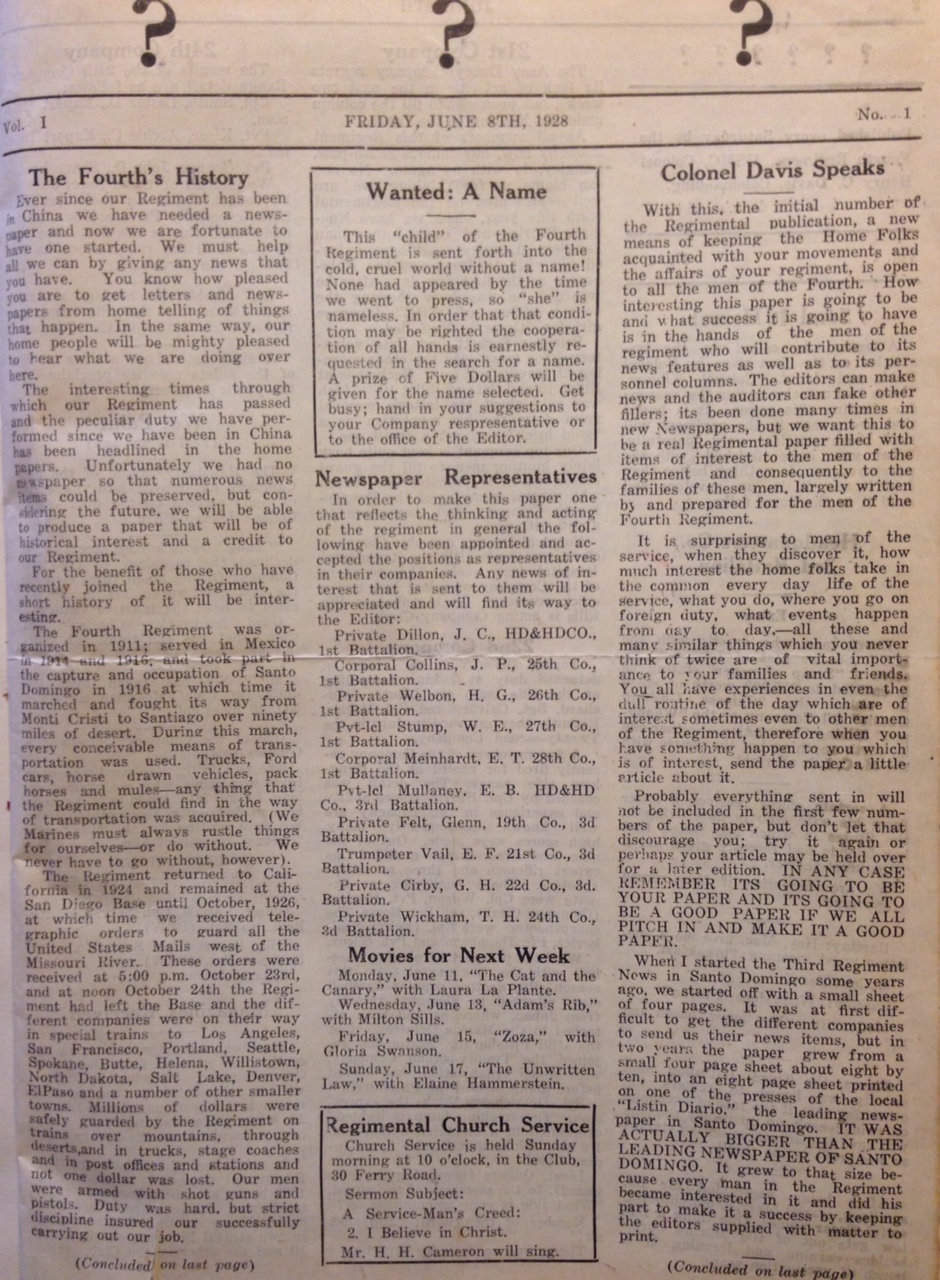
The first edition of The Walla Walla, 8 June 1928
That first edition contained a brief history of the 4th Marines as well as company news and the results of Marine sports events across the city. In addition, the regiment’s commander, Col Davis, had another use for the newsletter. He called upon his men to cut out the regimental history and send it back home in an envelope to keep families informed of what their sons, and husbands and fathers were doing in China. Marines were notoriously bad letter writers, leaving stateside family members to constantly write HQ USMC asking for that their sons be made to write home. Initially, funds for publishing the Walla Walla came from the regiment’s recreation and sports budget, but within one year the magazine was self-sufficient by selling advertising space to local merchants.
Over time the Walla changed from a small and graphically simple 4 page document into a beautiful 36 plus page publication in a magazine format. The quality of paper used also improved drastically, leaving each page with a slick glossy finish. The first major design change came at the end of May 1929 when a cover was added to the document. At first the cover design was either a simple picture or drawing framed within a circle surrounded by some stock design images of Chinese life and architecture. As the years went by the cover art work got better and better until very late in 1938, when photographs and a more simple cover was used.
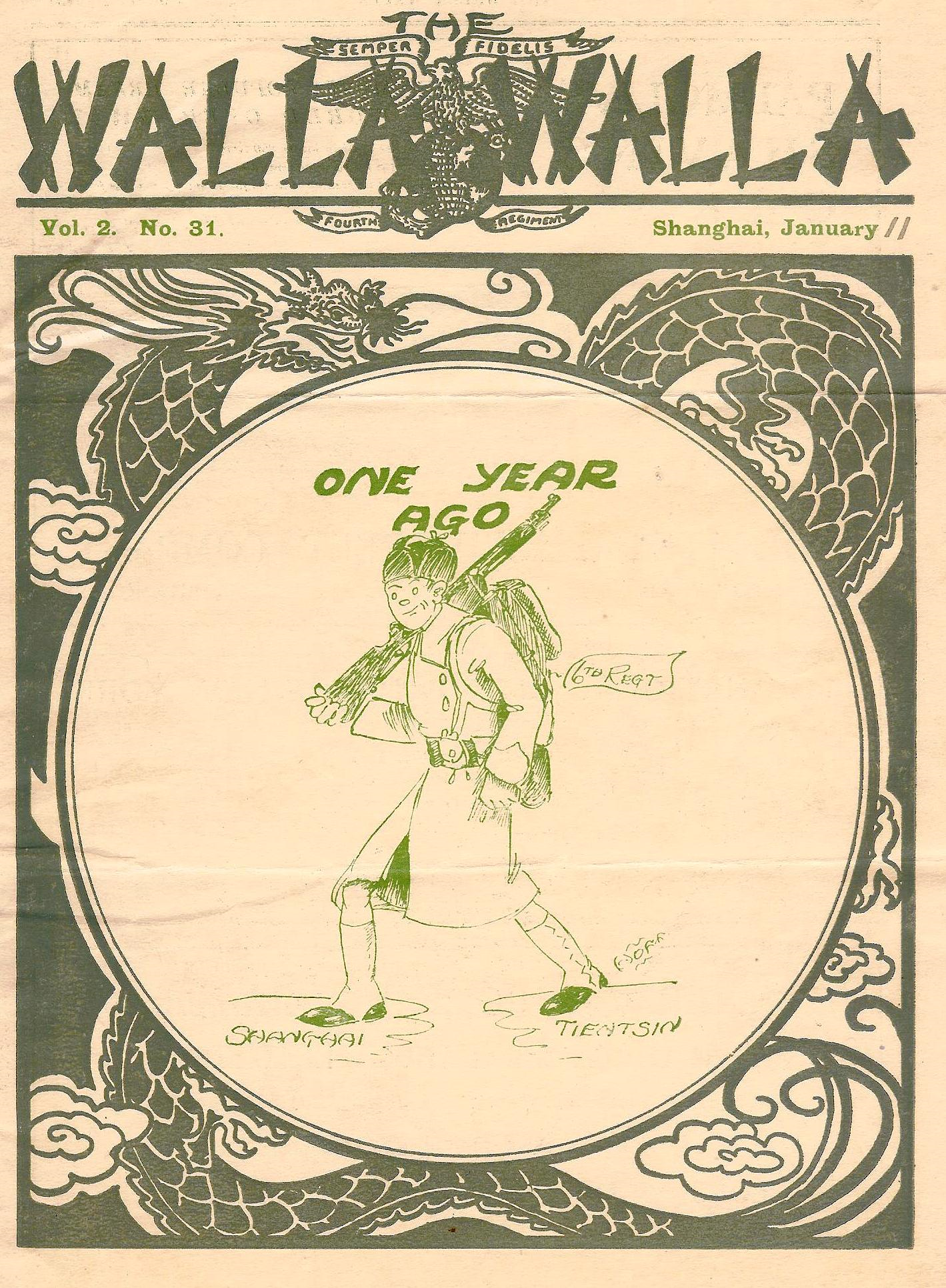
An example of an early cover, 1930.
Although the Marines were the editors of the Walla Walla, the actual magazines were initially printed by the “Evening News” a Shanghai based newspaper, later by the “Mercury Press” and finally by 1937 the “Willow Pattern Press”. The magazines format remained constant through its history, regimental news, company news, updates from the 4th Marine Church, Navy YMCA updates, arrivals and departures and sports. But as the years went by, cartoons, poems, and jokes submitted by the men of the regiment were included in each publication. Furthermore, a hugely popular feature of Wallas in the mid 1930’s was an advice column allegedly written by Chinese women who offered guidance on love and dating. In reality, these women were Marines serving as the ghost writers for the column. The most famous of the columnists was “Cissy Wu”, who until October 1938 when she “went stateside” had a large following. As war threatened Europe and Asia, the tone of the magazine became more serious and subdued. This reflected in the cover art as well as content. Articles might now include information on equipment and its employment as well as small unit tactical problems and their solutions.
Lastly, the magazine was available at no cost to the Marines and weekly circulation soon reached 3,000. In addition, subscriptions could be had for $6.00 MEX or $2.00 US currency for families back home or Marines reassigned away from China. By 1933, over 1,500 subscriptions were being sent through the Shanghai post office to addresses over the world.
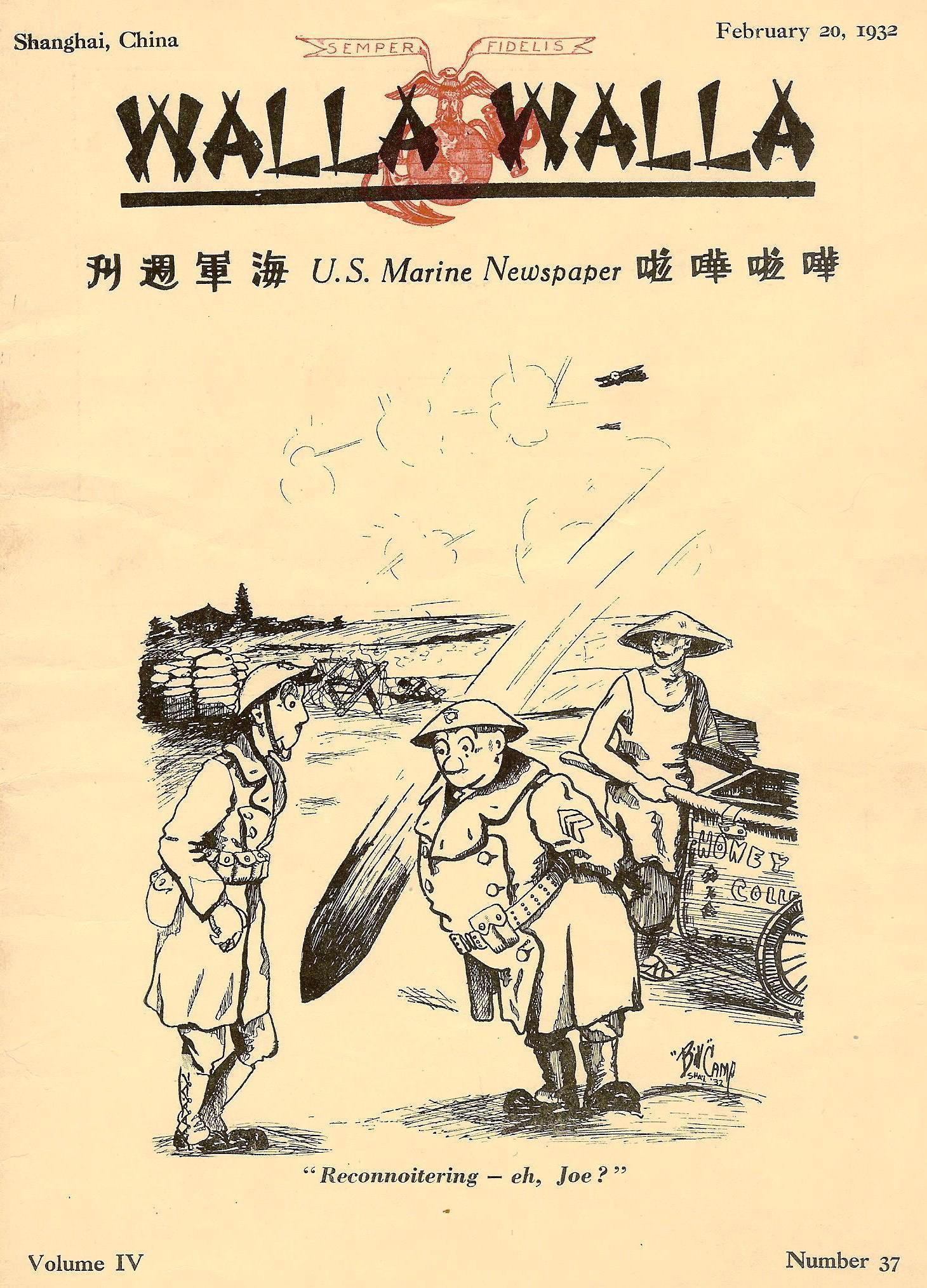
By 1932 the cover art had improved over the first two years designs
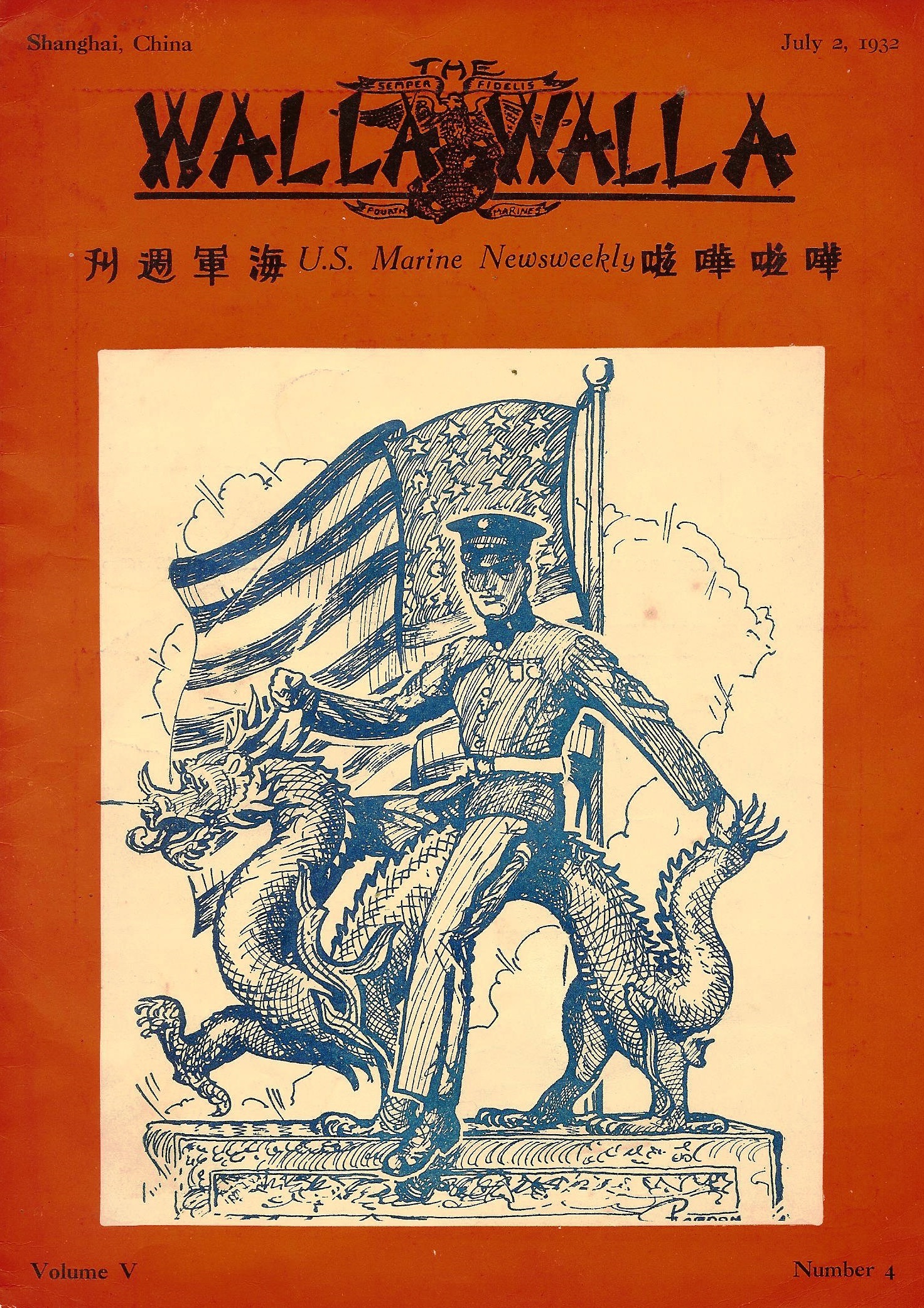
The Marine riding the dragon proved to be one of the Walla Walla's most popular cover designs and was featured twice, in 1931 and 1932. The 1931 edition having the Marine drawn in green, while the later edtion shows him in blue.
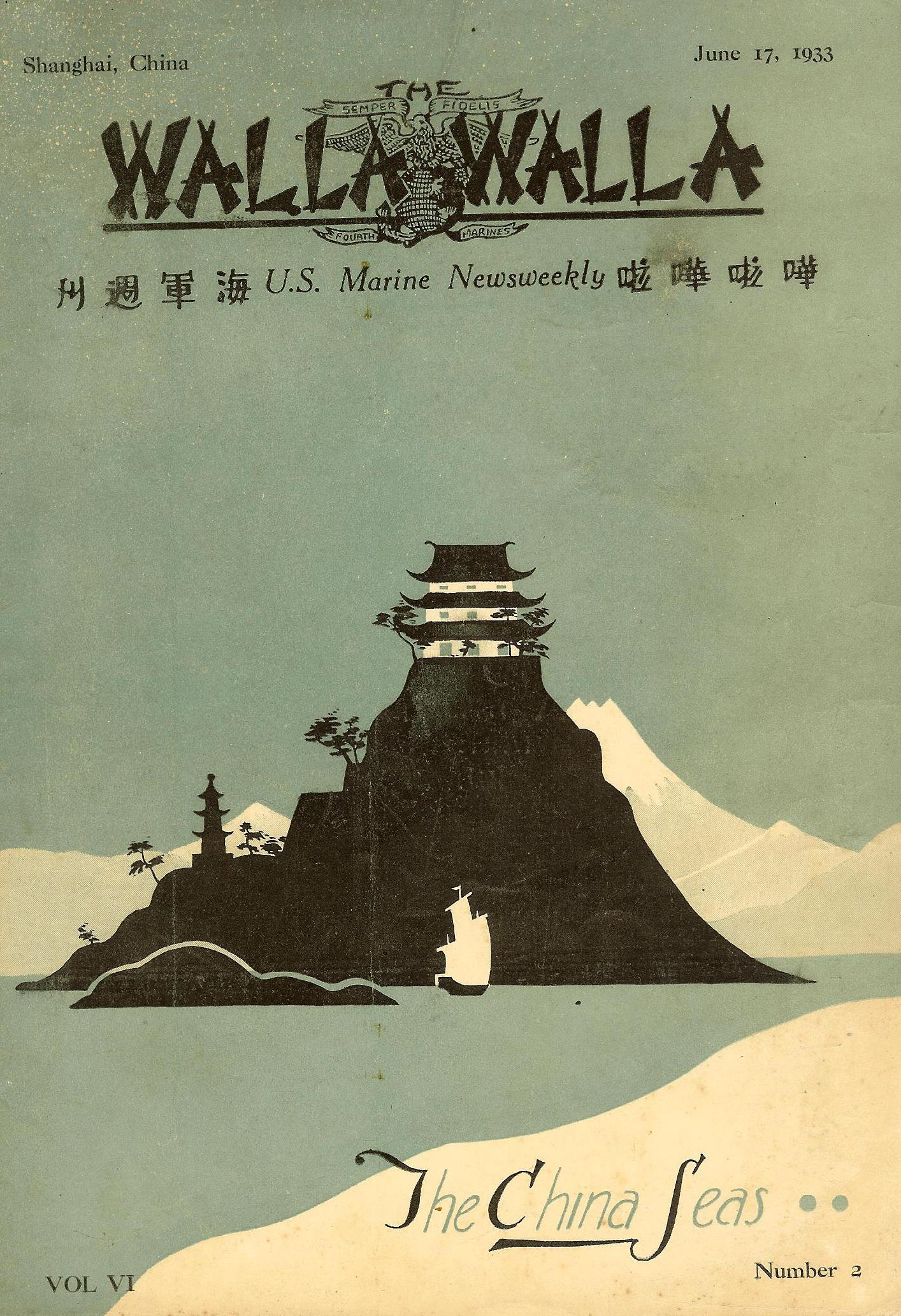
A year later shows more a more stylized art deco cover
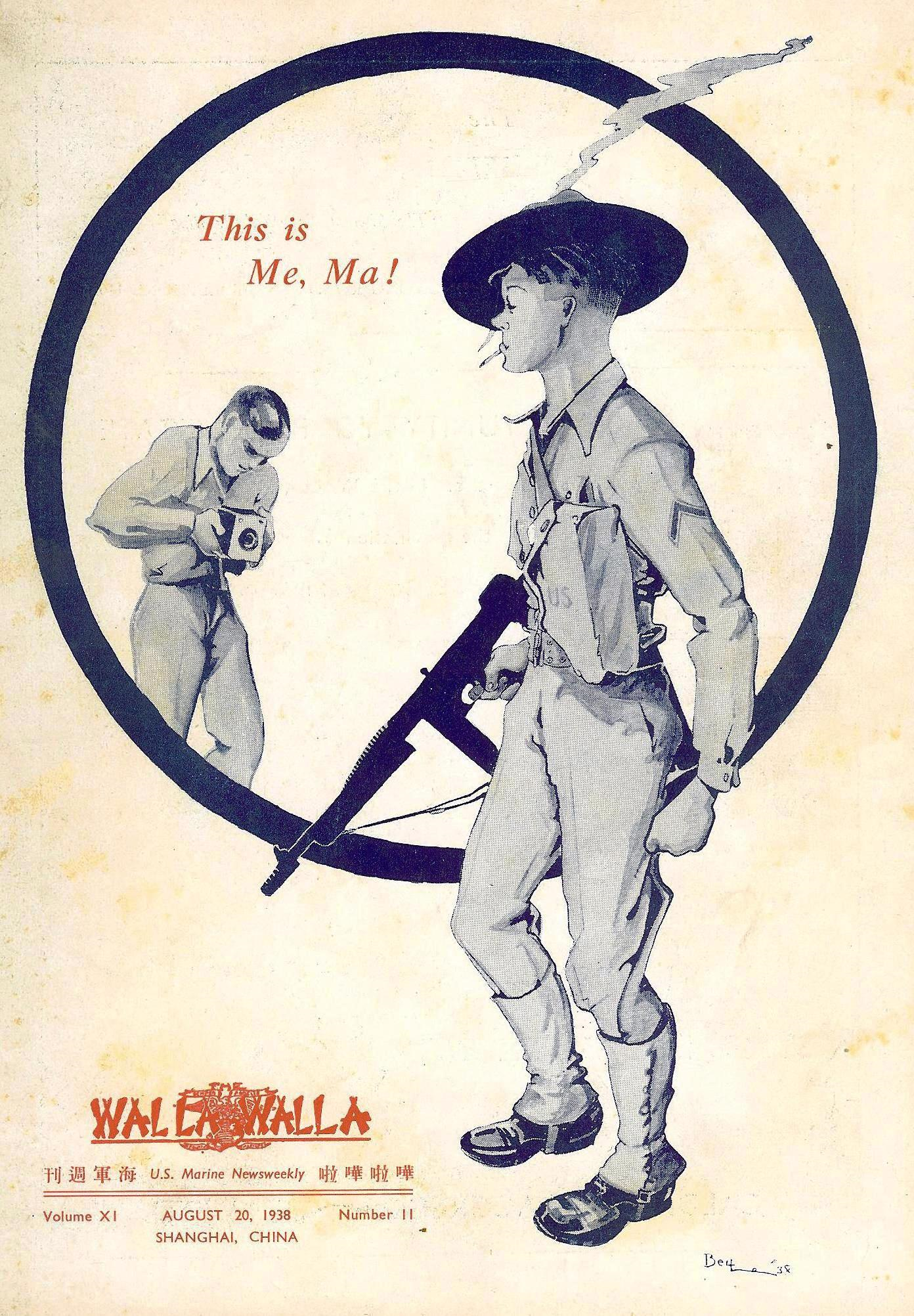
By the late 1930's the covers of the Walla Walla had become glossy and more professionally finished
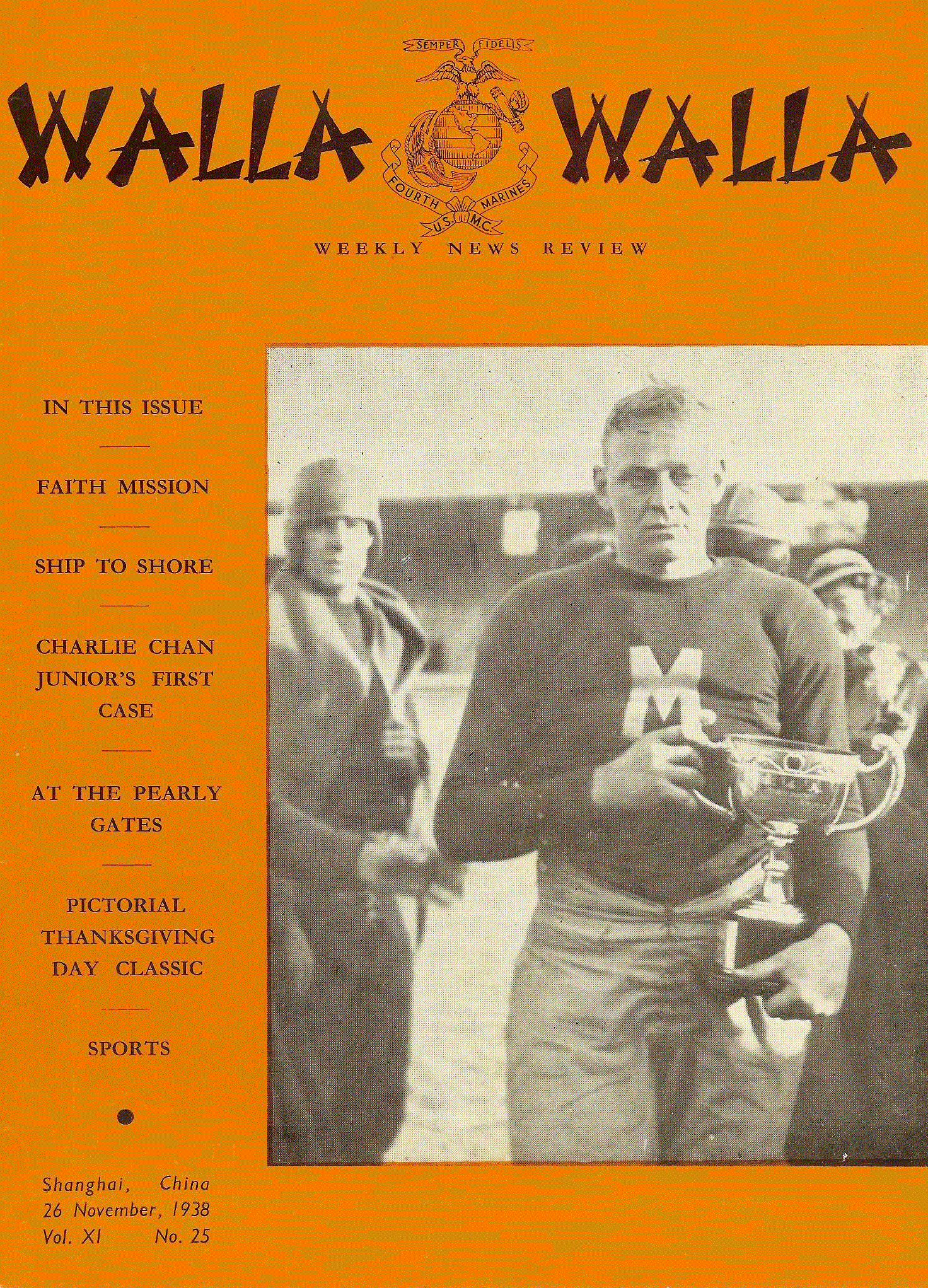
At the end of 1938, with Japan firmly in control of Shanghai and the city in a more somber mood, the Walla Walla took on its final form. Instead of featuring colorful cover artwork, photographs were now standard. Furthermore, its contents became assumed a more serious tone. Now featured were stories on the world war, weapons systems and explantions of field exercises.
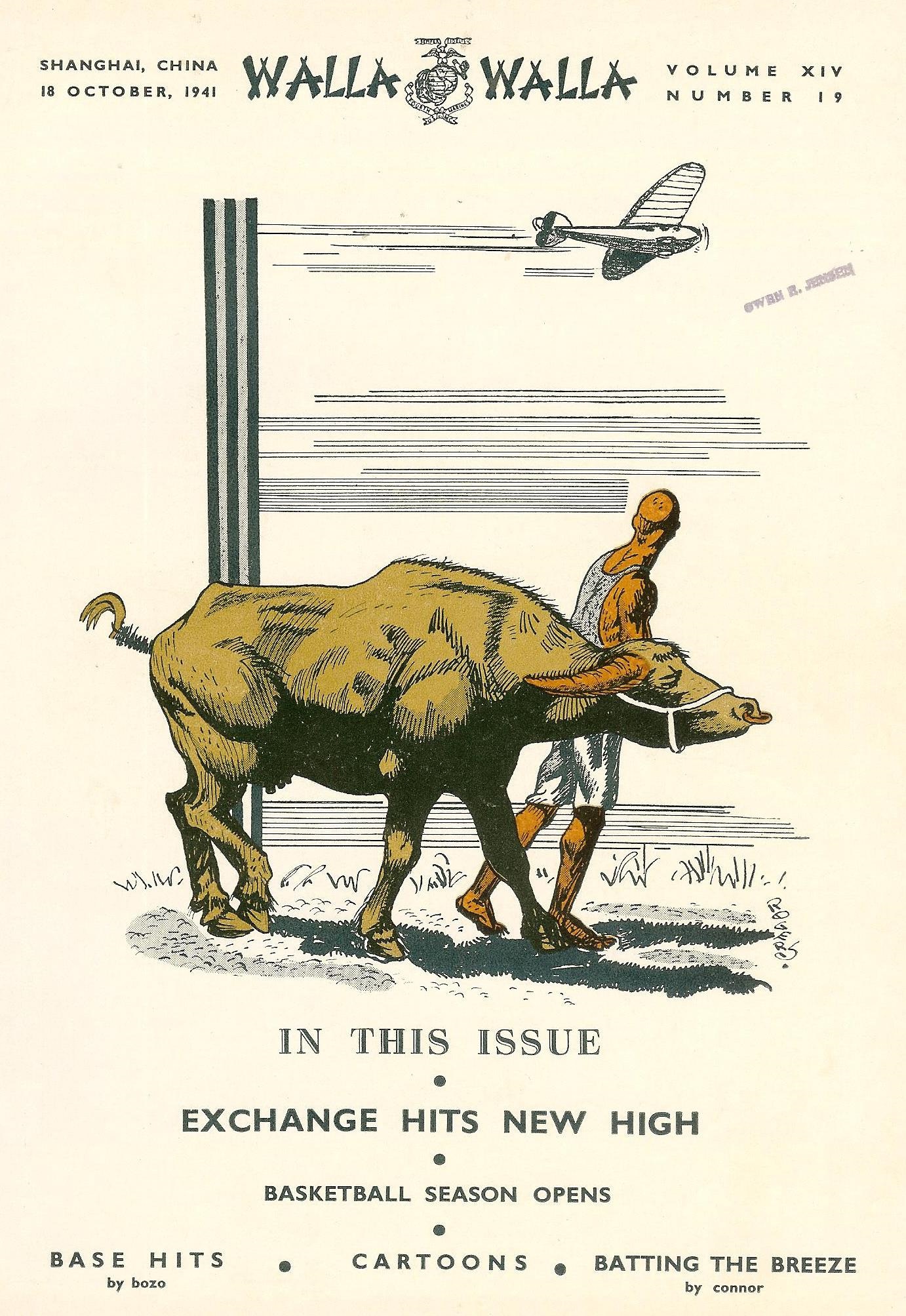
A very late edition of the Walla Walla, October 1941. This copy was owned by a Marine Reservist who later became a POW. Very few of these later 1941 editions survive as the Marines left Shangahi in November of that year for the Philippines where they were captured instead of returning stateside. This edtion follows the standard format of types of articles, although it attempted to introduce a new advice columnist "Miss Tamara" as a replacement for the long departed "Cissy Wu"
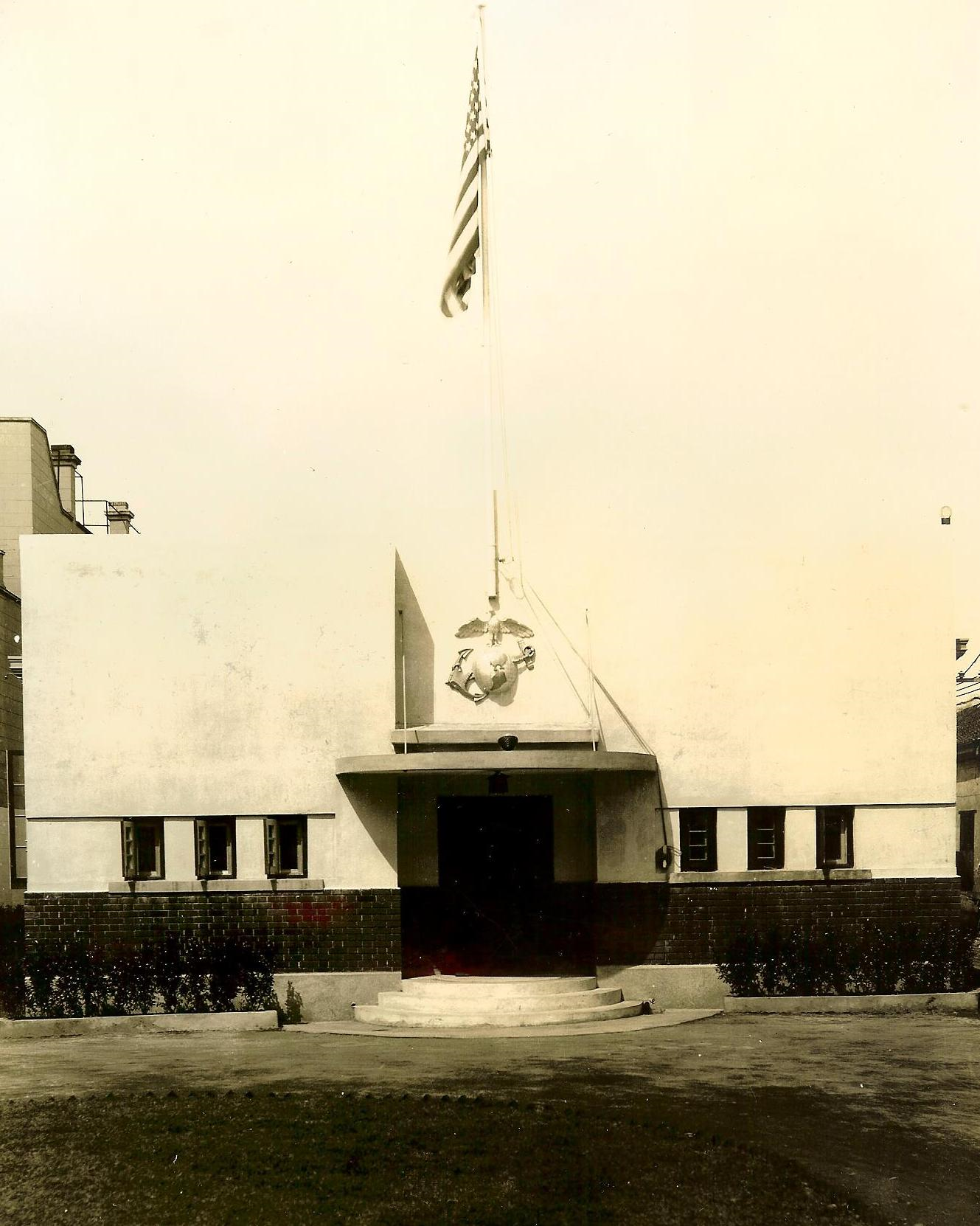
551 Ferry Road, Shanghai was where the Walla Walla was edited